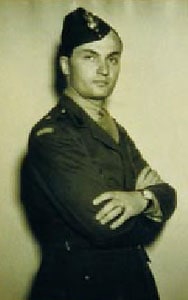After a few moments of hesitation our commander made up his mind. He stopped his brigade and reversed the direction of our march. We briskly crossed the strip of woods separating us from the enemy. Our three regiments assembled at the edge of the woods. Between the enemy column on the highway and us ran a strip of stubble field over a mile long. Close by the highway was a stretch of dry meadowland.
Since we stood on higher ground, we saw plainly what went on the highway. What a magnificent sight! A long sprent of troops wound its way lazily through a cloud of dust, while the motor transport swiftly flowed by the slowly marching infantry.
The brigadier’s command came fast: „The 1st Lancer regiment and the 3rd Light Horse regiment prepare for a charge. The 2nd Lancer regiment will be in reserve. The brigade’s heavy machine-gun squadrons will get together and support the charge with their massed fire.
The antitank squadron will screen the brigade from the west against a possible tank attack. The German’s armor might be in the vicinity. Meanwhile, the engineering squadron is to take advantage of the charge to reach the bridge and the railway track as quickly as possible and blow them up.”
The regimental commanders promptly carried out their respective orders. The squadron pushed ahead to the edge of the forest, while the engineering squadron left us to do their job. We could watch it marching off at a brisk trot.
Meanwhile, the squadrons stretched out in attack formation on the open field beyond the forest. The command „Trot, march” rang out. The enemy had not yet seen us, and the rising sun promised a clear day. The picture of the regiment emerging from the woods was so enchanting that it seemed unreal. What a perfect model for a battle painter! Where is our Vernet or Gericault! First we proceeded at a slow trot. The Germans still marched on, apparently unconcerned. Then suddenly our heavy machine-guns, hidden in the woods, gave tongue with a well-timed salvo. It went straight into the enemy column.
The great adventure was on!
The command „Draw sabres, gallop, march!” flew down the lines. Reins were gripped tighter. The riders bent forward in the saddles and they rushed forward like a mad whirlwind.
Meanwhile, the surprised serpent of enemy infantry on the highway stopped. Soon the road became a scene of wild confusion. There were shouts, confused orders, and chance shots. We, however, continued our gallop. Fortunately, the first German shots went over our heads. We were then about 1500 feet from the highway and saw that under fire of our heavy machine-guns the Germans were becoming a frantic mob. Some enemy armored cars stopped, while others tried to ram their way through the confusion. Some of the enemy soldiers made a desperate attempt to make a stand in the ditch by the roadside. Other sought cover behind the transport wagons.
Suddenly the fire from machine-guns began to score hits in our ranks. The van of the column, which had been nearing Rypno, seem to have mastered its panic; soon its fire began to tell. The first casualties fell from horses. We were then so close that we could see vague outlines of men in the cloud of dust. Suddenly our machine-guns ceased firing. They had to do it to avoid hitting us. Meanwhile, within a few seconds we reached the highway.
Sabres and lances went to work fiercely. Some confused German infantrymen pushed off our sabre blows with their rifle butts. Some simply tried to cover their heads with their arms, but our lances reached even those who tried to hide between the wagons.
The wave of our charge crossed the highway and pursued those who sought flight. Stray shots from the thickets kept falling into the mob on the highway, killing the enemy as well as us. The battle on the highway was practically over. The Germans began to surrender in large groups. A squadron of the 2nd Lancer regiment, which so far formed our reserve, was dispatched in pursuit of the fleeing enemy.
We were out of breath and dog-tired, but elated by the dreamed-up victory. Moreover, it was paid for with no great loss of life. The panic-stricken Germans were decidedly poor marksmen. The horses fared the worst; we lost between 30 and 40 of them. We had a score or so of wounded men, but only three were killed. The morning sun was high when our bugler blew assembly. We came up slowly, driving our prisoners ahead of us. We took about 200 men, most of them insane from fright. The villages of Rypno and Fastow were aflame. They belched dense clouds of black smoke, which lazily rose to the morning sky. In withdrawing, the remnants of the German battalion did not miss the chance to set the torch to two innocent villages. Then, suddenly, from the north a sound of an explosion could be heard. In a few minutes there came another, and after a while two more shook the air. This was the signal that our engineers had done their job. The bridge over the Narew and the railway track had been blown up.

The Communist Party of Poland – An Outline of History, Harvard University Press, 1959 and 1976
1. A European Federalist – Joseph Pilsudski and Eastern Europe, 1918-1922, Hoover Institution, 19693. 20th Centry Poland, Columbia University Press, 1977 and 1979
2. A History of Soviet Russia, Prentice Hall, 1979, 1984, 1988, 1992, and in 1996 under a new title
3. A History of Soviet Russia and its Aftermath.
4. War at Any Price: A History of WWII in Europe, Prentice Hall, 1987, 1990
5. Alexander I – Russia’s Mysterious Tsar, Hippocrene Books, 1990
6. One Life is not Enough, Marszalek, Torun, 1994 (in Polish)
His article makes clear that he was a junior officer in the Polish cavalry at the beginning of the Second World War and participated in the cavalry charge he describes.
